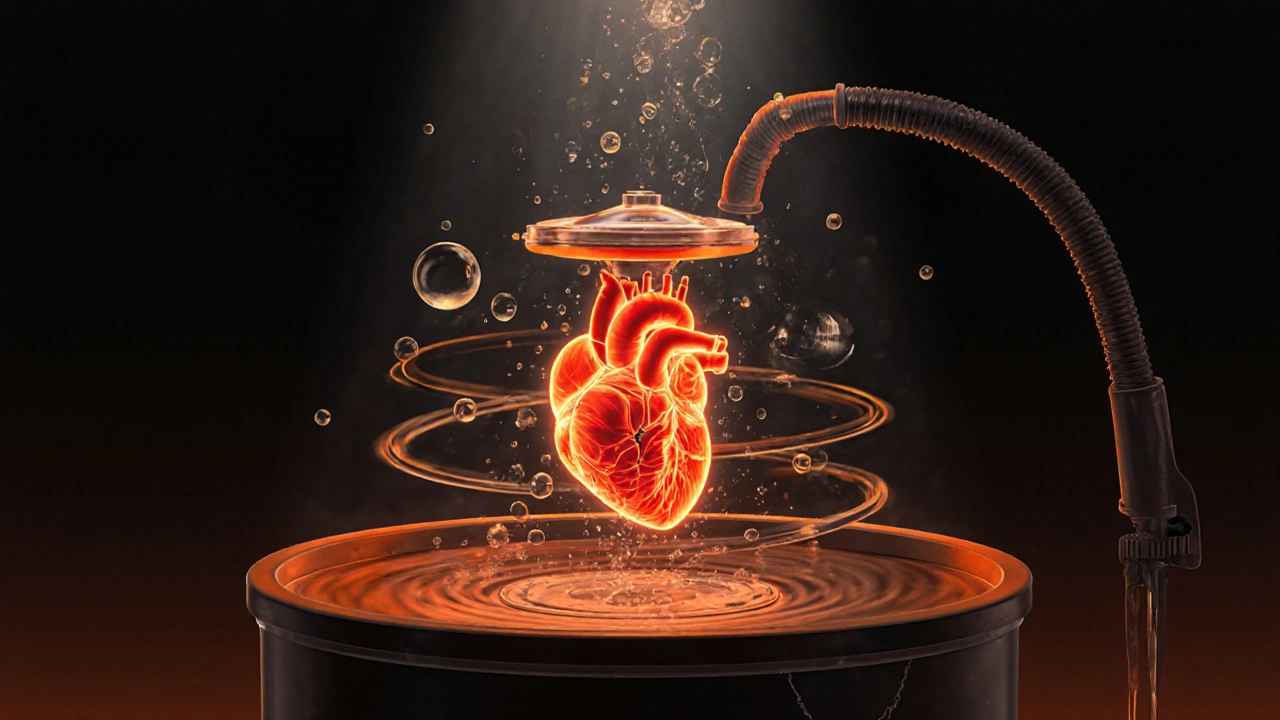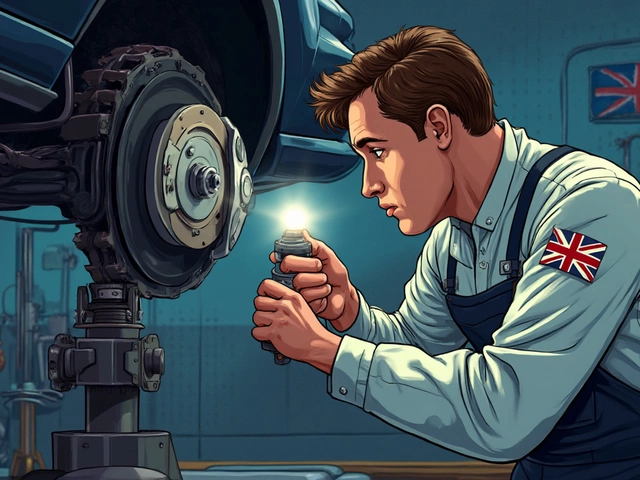Fuel Pump Failure Diagnostic Tool
Select all symptoms you're experiencing:
If your car suddenly sputters on the highway, struggles to start on a cold morning, or loses power when you step on the gas, it’s not just bad luck. It could be your fuel pump giving out. Fuel pumps don’t always die with a bang-they whisper their warnings long before they quit. And if you miss those signs, you could end up stranded with a broken-down car and a much bigger repair bill.
Engine Sputtering at High Speeds
One of the most common signs of a failing fuel pump is engine sputtering, especially when you’re driving at a steady high speed-like on the motorway. This isn’t just a rough idle; it’s a rhythmic hiccup where the engine misses fuel for a split second, then catches again. It happens because the pump can’t keep up with demand. Modern engines need consistent fuel pressure, and when the pump weakens, it can’t deliver enough under load. You might notice it more when climbing hills or accelerating past 60 mph. If this happens often, don’t ignore it. It’s not the spark plugs or the air filter. It’s the pump struggling to keep the engine fed.
Difficulty Starting the Car
Have you ever turned the key and heard the engine crank but just won’t catch? Not the slow crank of a dead battery, but a normal-sounding starter that just doesn’t fire up? That’s a classic fuel pump symptom. When the pump is failing, it can’t build enough pressure to deliver fuel to the injectors right away. You might turn the key a few times before it starts, or you might need to wait 10 seconds and try again. Some people even tap the fuel tank with a rubber mallet to get it going-temporary, risky, and a dead giveaway. If your car takes more than two tries to start after sitting for more than an hour, the pump is likely on its way out.
Loss of Power Under Load
Think about the last time you merged onto a busy road or tried to pass another vehicle. If your car hesitates, feels sluggish, or loses acceleration even when you press the pedal all the way down, that’s not just a lazy engine. It’s the fuel pump failing to deliver enough fuel under pressure. This isn’t the same as a clogged air filter, which causes general power loss. This is sudden, situational, and gets worse the harder you push the engine. You’ll notice it most when towing, climbing hills, or driving uphill with a full load. The engine may even throw a check engine light, but the code won’t tell you it’s the pump-it’ll just say ‘fuel system lean’ or ‘misfire.’

Loud Whining Noise from the Fuel Tank
Most people don’t realize fuel pumps are supposed to be quiet. A healthy pump hums softly, almost like a refrigerator. But when it’s going bad, it starts whining-loud, high-pitched, and unmistakable. You’ll hear it when you turn the ignition on before starting the engine, or when you’re idling at a stoplight. The noise comes from the pump’s internal bearings wearing out or the motor straining. If you hear this sound and you’ve ruled out a loose gas cap or exhaust leak, the fuel pump is the prime suspect. Some pumps make this noise only when the tank is low, which makes it even more dangerous-you think it’s just running on fumes, but it’s actually the pump screaming for help.
Car Stalling at High Temperatures
Ever been stuck in traffic on a hot day, and your car suddenly dies? You restart it, and it runs fine for a few minutes-then stalls again. This isn’t overheating from the radiator. It’s the fuel pump overheating. Fuel pumps are cooled by the fuel around them. When your tank is low, the pump is exposed to air instead of liquid, and it overheats. A failing pump is even more sensitive to heat. If your car stalls after sitting in traffic, or only after driving for 20+ minutes in warm weather, the pump is likely overheating and shutting down as a safety measure. This is a serious warning. It’s not a one-off. It’s a pattern.
Check Engine Light with No Clear Code
Modern cars have sensors that monitor fuel pressure. If the pressure drops too low, the engine control unit triggers a check engine light. But here’s the catch: the code won’t say ‘fuel pump failure.’ It’ll show something vague like P0171 (System Too Lean), P0300 (Random Misfire), or P0442 (Evaporative Emission System Leak). These codes point to symptoms, not the root cause. A mechanic might replace oxygen sensors or clean the throttle body, but if the fuel pressure is low, none of that will fix it. If you’ve had multiple repairs and the problem keeps coming back, ask for a fuel pressure test. A good pump should hold between 45-65 psi depending on your car. Anything below 40 psi means it’s time to replace it.

Random Engine Shutdown While Driving
This is the most dangerous symptom. You’re driving along, everything’s fine, then-nothing. The engine just dies. No warning. No sputtering. Just silence. You coast to the side of the road, turn the key, and it starts right back up. This can happen once, then again a week later. It’s not electrical. It’s not the ignition switch. It’s the fuel pump intermittently cutting out. Maybe the brushes inside the motor are worn. Maybe a connection is loose. Either way, this isn’t a glitch. It’s a failure in progress. If this has happened to you, don’t wait for it to leave you stranded on a dark road. Replace the pump before it leaves you vulnerable.
Why Fuel Pumps Fail (And How to Prevent It)
Fuel pumps don’t just die randomly. They fail because of neglect. The biggest killer? Running your tank low. Every time you drive with less than a quarter tank, you’re exposing the pump to air. Air heats up the pump faster than fuel can cool it. Dust and debris from the bottom of the tank also get sucked into the pump’s filter. Over time, that clogs it and forces the pump to work harder. Most fuel pumps last between 100,000 and 150,000 miles. But if you’re always running on fumes, you might see failure at 60,000. To extend its life: keep your tank at least a quarter full, use quality fuel (no cheap station brands), and replace the fuel filter every 40,000 miles-even if your manual says otherwise.
What to Do Next
If you’re experiencing any of these symptoms, don’t guess. Get a fuel pressure test done. A mechanic can hook up a gauge to the fuel rail and measure the pressure while the engine runs. If it’s below spec, the pump is bad. If it’s normal, the problem might be the fuel filter, a clogged injector, or a bad sensor. But if the pressure drops under load or won’t hold, replace the pump. Don’t wait for it to leave you stranded. A new fuel pump costs between £200 and £500 depending on your car, but a tow truck and rental car will cost more. And if it dies while you’re on a busy road? That’s not just expensive-it’s dangerous.





